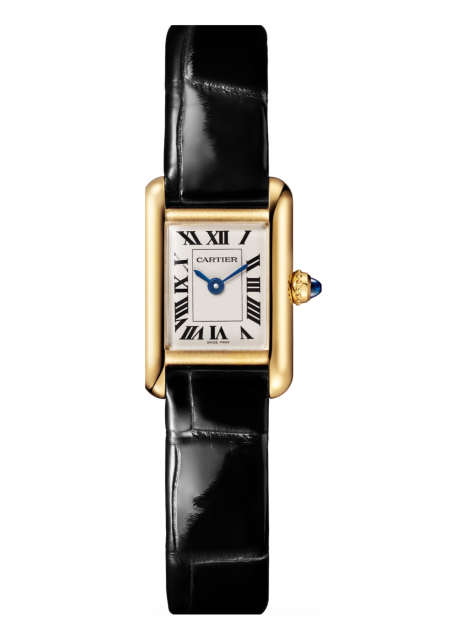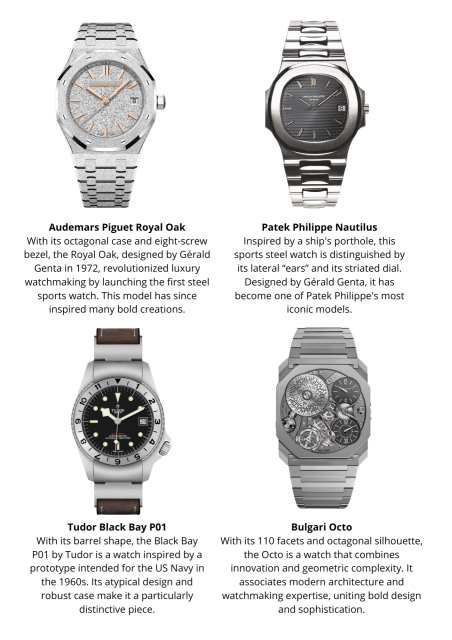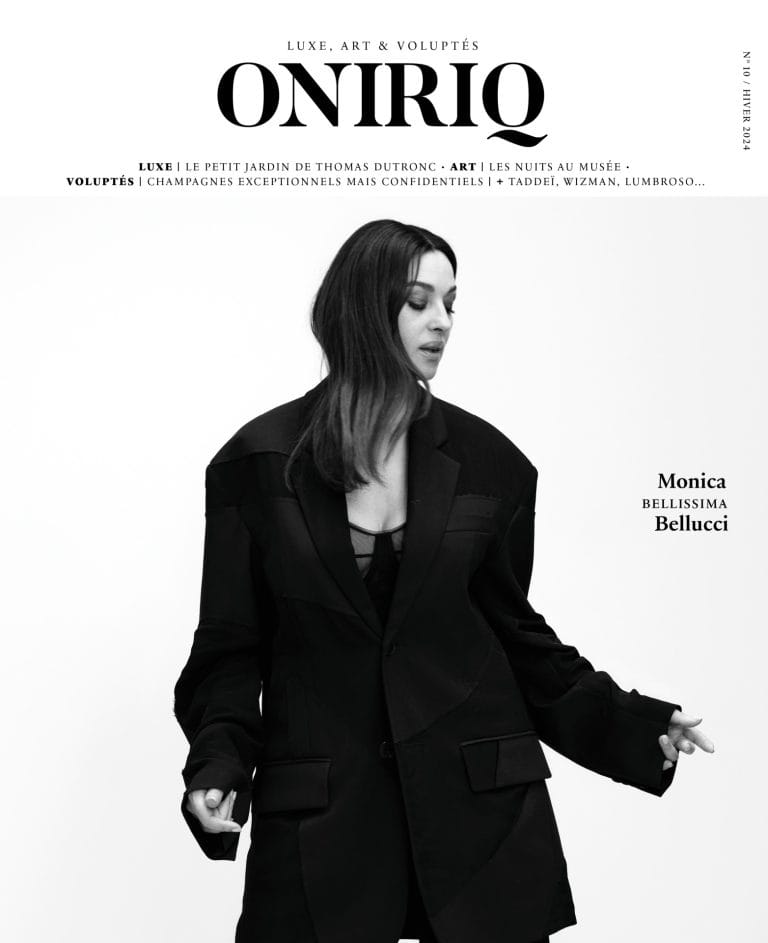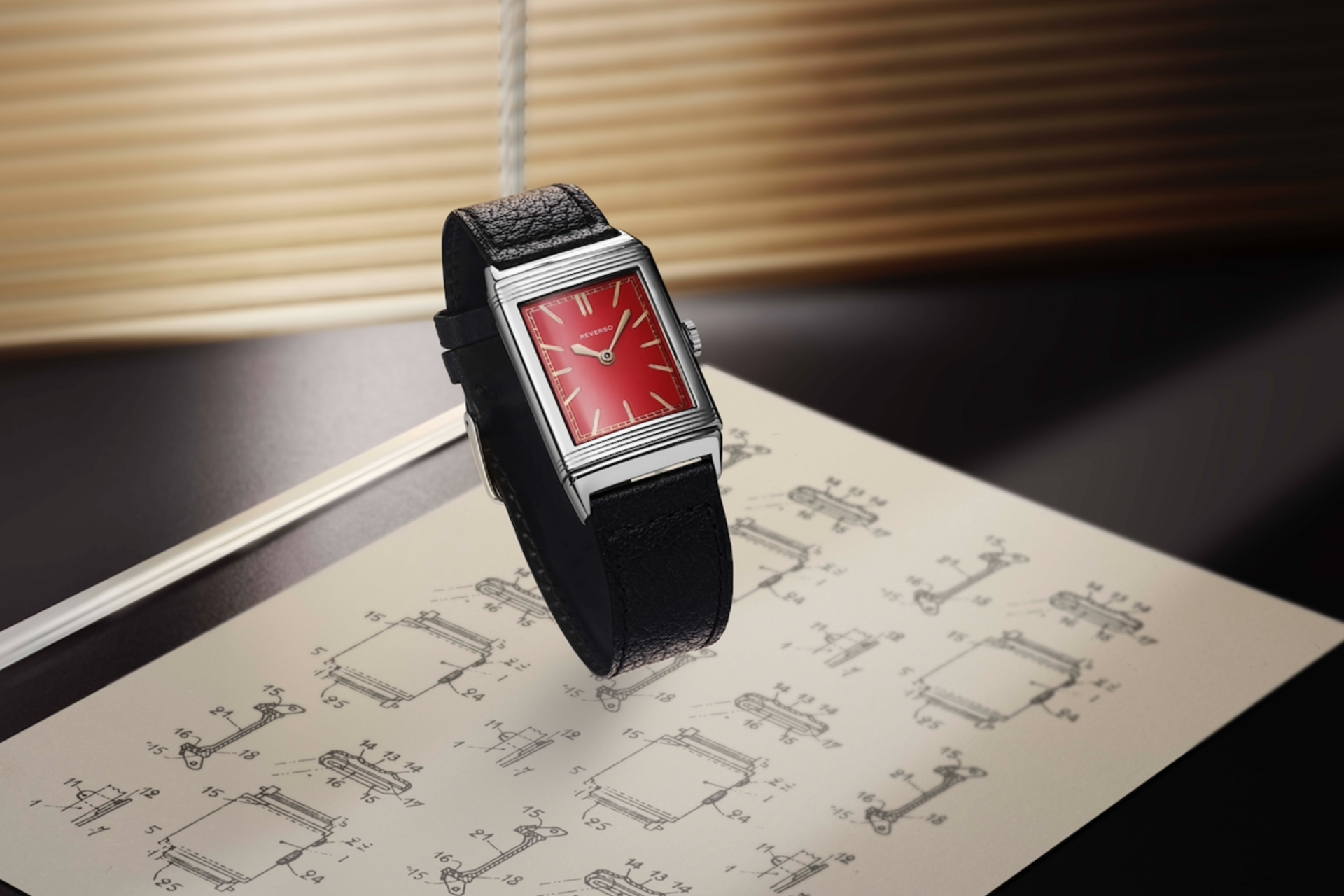Translated by Bethszabee Garner
In this almost mythical quest to “square the circle”, watchmaking seeks to create timeless pieces capable of defying obsolescence and resisting fleeting fashions. Some brands opt for the classic round shape, synonymous with sobriety, while others explore more original geometries to set themselves apart. Thus, Jaeger-LeCoultre has chosen the rectangle, TAG Heuer the square, Audemars Piguet the octagon, Breguet the oval, F. P. Journe the tortoise shape, etc., each imposing its singularity.
This craze for less conventional shapes reflects a need for originality and differentiation, particularly appreciated by watch enthusiasts who are looking for pieces with character. At a time when brands are revisiting classic lines, such as the cushion and barrel, as well as more innovative designs such as the ellipse or triangle, the appeal of these iconoclastic creations continues to grow. As Paul Rand, the famous designer, said, “design is the method of associating form and content. Design can be art, it can be aesthetics. Design is so simple, that's why it's so complicated”, emphasizing the complex art of creating timeless and aesthetic forms.
A history of boldness and renewal
The history of the shaped watch is part of a quest for singularity and visual identity. This approach finds major inspiration in the Art Deco movement, which left its mark on watchmaking with its geometric shapes and innovative aesthetics. It was in this context that Jaeger-LeCoultre unveiled the Reverso in 1931, a reversible rectangular watch designed to withstand the shocks of polo. This model embodies both the abundant creativity of the time and timeless elegance. “This model arrived in 1931, at the end of a period marked by the rectangular watch,” recalls Stéphane Belmont, Heritage Director at Jaeger-LeCoultre. He also highlights the role of the jewelers of the time, who introduced a more aesthetic than functional vision to watchmaking, making geometry a criterion of refinement.

This Art Deco influence can be found in other icons of watchmaking. The Tank of Cartier, created in 1917 and inspired by the interior of a military tank, embodies elegance through its rectangular, arched or curved variations. Even older still, the Santos, designed in 1904 for aviator Alberto Santos-Dumont, has stood the test of time thanks to its bold square lines and recent technical developments, combining modern materials and innovative movements.

However, the 1950s marked a slowdown for shaped watches. The rise of automatic movements, more complex to integrate into non-circular cases, and the growing demands in terms of water resistance limited their development. It was only with the arrival of quartz in the 1970s that creativity was reborn, offering new freedom to designers. “With the arrival of quartz, the only way to differentiate oneself was to focus on aesthetics,” emphasizes Stéphane Belmont. This context allowed daring creations such as Gérald Genta's Royal Oak for Audemars Piguet to see the light of day. Launched in 1972, this watch with its octagonal stainless steel case turned convention on its head, as Michael Friedman, head of complications at Audemars Piguet, recalls: “When it was launched, we had never seen anything like it.”
Pushing the limits of design
During this same period, Piaget also explored this avant-garde approach with the Warhol watch, a piece inspired by the iconic artist. Its bold geometric design and atypical case reflect an era when the watch became a true style accessory, combining minimalism and sophistication. Warhol himself, a watch enthusiast, considered these objects above all as works of art, emphasizing the aesthetic dimension of this piece.

Today, the shaped watch is establishing itself as a strong signature for many brands. Bulgari is a perfect example with its Serpenti collections, inspired by the head of a snake, and Octo, with its bold geometric facets. Fabrizio Buonamassa, artistic director of Bulgari, explains: “We are not necessarily looking to create shaped watches, but rather to favor clean lines, inspired by rationalist architecture.” Each creation reflects an avant-garde vision where design becomes a miniature sculpture, faithful to the Italian heritage.
Historic brands such as Cartier, Jaeger-LeCoultre and Piaget are not the only ones to perpetuate the boldness of shaped watches. A wind of renewal is blowing thanks to independent brands such as Serica, March LA.B and Echo/Neutra, which are reinterpreting these creations for a new generation. By combining clean geometries, contemporary materials and craftsmanship, they illustrate that shaped watches, far from being marginal, remain a privileged field of expression for pushing the limits of watch design.
Thus, the shaped watch continues to reinvent the codes. More than just a functional object, it becomes a true work of art, leaving its mark on both its era and the minds of those who see it.
Article written by Édouard Bierry, to be found in issue 10 of OniriQ Magazine.







